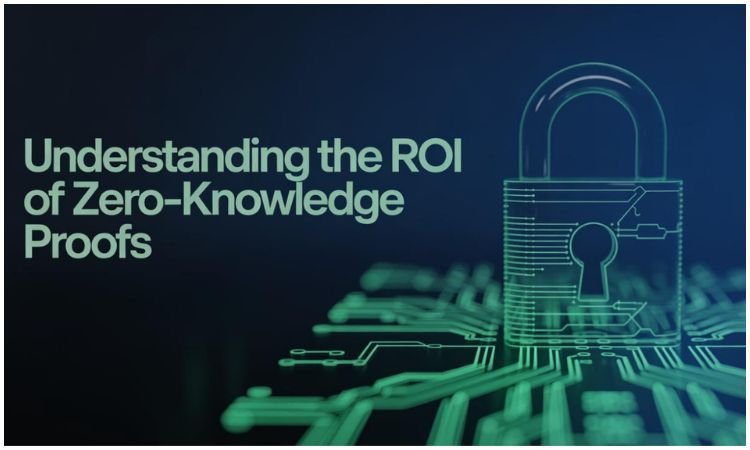
How Does Blockchain Support Data Privacy: A Comprehensive Guide
In an era where data breaches and privacy concerns dominate headlines, blockchain technology emerges as a potential savior. But how does this revolutionary technology actually support data privacy? In this comprehensive guide, we will delve into the mechanisms, benefits, and real-world applications of blockchain in safeguarding your precious data.
Traditional authentication methods: Fort Knox with a cardboard door
It’s well known that passwords are unsafe. Phishing, brute-force cracking, and shoulder surfing can bypass them. Because we use the same passwords on many sites, one hack could reveal several accounts. Fingerprints and face recognition provide some security, but they have limitations. Fingerprint scanners may not function for identical twins, and deepfake technology is improving, threatening facial recognition systems.
Two-factor authentication (2FA) needs a second verification step. But it’s not fail-safe. It’s possible to listen in on popular 2FA SMS through SIM swapping. To defend the digital door, we need a better solution than hackable keys. We need a system that doesn’t divulge our passwords, so hackers can’t steal or abuse them. ZKP-based identification promises to make online life safer and more private.
The Unbreakable Chain: How Blockchain Works

simple blockchain diagram with blocks and chains
At its core, blockchain is a decentralized, distributed ledger technology that records transactions across a network of computers. Unlike traditional databases, blockchain data is stored in blocks that are cryptographically linked and secured. This unique structure offers several key features that contribute to data privacy:
- Decentralization: No single entity controls the data. It’s distributed across numerous nodes, making it incredibly difficult to manipulate or tamper with.
- Immutability: Once a transaction is recorded on the blockchain, it’s virtually impossible to alter or delete, ensuring data integrity.
- Transparency: All transactions are publicly viewable, promoting accountability and trust.
- Encryption: Data is encrypted before being added to the blockchain, providing an additional layer of security.
The Mechanisms Behind Blockchain Data Security
Blockchain’s robust data security comes from a combination of ingenious mechanisms:
- Hashing: Each block contains a unique cryptographic hash that identifies its content. If even a single bit of data is changed, the hash changes, making tampering immediately evident.
- Consensus Mechanisms: Different consensus mechanisms like Proof of Work (PoW) or Proof of Stake (PoS) ensure that only valid transactions are added to the blockchain, preventing fraud.
- Public-Key Cryptography: Users have a pair of keys – a public key for receiving transactions and a private key for authorizing them. This ensures that only the rightful owner can access and control their data.
Benefits of Blockchain for Data Privacy
The marriage of blockchain and data privacy yields a plethora of benefits:
- Enhanced Security: Decentralization, immutability, and encryption make blockchain an exceptionally secure system for storing sensitive information.
- Data Ownership: Users retain control over their data, deciding who can access and use it.
- Reduced Risk of Data Breaches: The absence of a single point of failure minimizes the risk of large-scale data breaches.
- Improved Transparency: Blockchain’s transparency can build trust between businesses and customers, as every interaction is recorded and verifiable.
- Auditable Trail: Every transaction on the blockchain leaves a permanent, auditable trail, which can be helpful for compliance and regulatory purposes.
Real-World Applications of Blockchain in Data Privacy

Blockchain’s potential for data privacy is already being realized in various sectors:
- Healthcare: Securely storing and sharing patient records while maintaining confidentiality.
- Finance: Streamlining transactions, reducing fraud, and ensuring regulatory compliance.
- Supply Chain: Tracking the origin and movement of goods, ensuring authenticity and preventing counterfeiting.
- Voting Systems: Increasing transparency and preventing voter fraud.
- Identity Management: Enabling individuals to control their digital identities and personal information.
Overcoming Challenges and Looking Ahead
While blockchain offers immense promise for data privacy, it’s not without challenges. Scalability, energy consumption (especially for PoW blockchains), and regulatory frameworks are areas that need further development. However, ongoing research and innovation are paving the way for a more secure and private digital future.
Embrace the Future of Data Privacy with Blockchain
As we move further into the digital age, the importance of data privacy cannot be overstated. Blockchain technology, with its groundbreaking features, has the potential to revolutionize how we protect and control our personal information. By understanding how blockchain supports data privacy, we can make informed decisions about its adoption and embrace a future where our data is truly our own.
FAQ
While blockchain is highly secure, it’s not entirely immune to attacks. However, due to its decentralized nature, hacking a blockchain would require immense computational power and coordination, making it extremely difficult.
There are various types of blockchains, including public blockchains (like Bitcoin and Ethereum), private blockchains (used by organizations), and consortium blockchains (managed by a group of entities).
Ready to explore the exciting world of blockchain? Dive deeper into our articles on blockchain basics, applications, and the latest developments.







